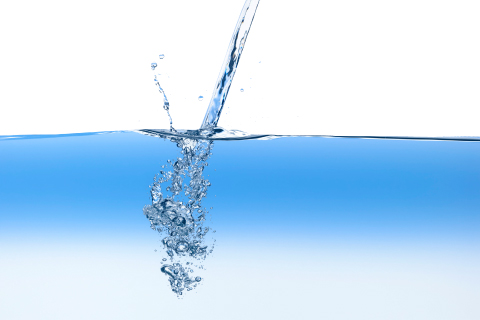Getting Your Drink on at the AFMDC

Believe it or not, there’s not an Austin Fit Magazine Distance Challenge race in November. But that doesn’t mean runners don’t have some serious preparation to do before the Austin Runners Club Decker Half Marathon on December 9, 2012. The main thing runners will be doing is increasing their distance…and thinking ahead to race fuel.
Last year, AFM ran an article in the November issue entitled, “Running Your First Half Marathon? Here’s What to Eat” (www.austinfitmagazine.com) which took readers through the food requirements of moving to 13.1 miles. And in this year’s October issue, one of our medical writers, Dr. Shannon Mitchel, examined the dangers of hyponatremia. With these two pieces in mind, let’s take a look at what to drink during your race. Believe it or not, runners have many options and should thoughtfully choose their liquids on race day.
It’s generally accepted that, for under an hour, a runner really needs nothing beyond a few sips of water, if that. The hydrating that makes the difference in these short distance races was done in the days before the race. Once that runner gets beyond an hour, then all kinds of different fluids might provide additionally needed benefits. Two primary considerations are how long will I be out on the course and how much do I sweat? Both answers will help determine how much and what should be drunk.
Of course, the first option is plain water, and all racecourses will certainly provide water (though on rare occasions, aid stations do run out; the really cautious runner may carry a bottle which she or he can fill in advance and refill whenever possible). Almost all sports gels and chews recommend drinking with their consumption (for example: Clif Bar Shot Blox “should always be followed with a mouthful of water” and Gu recommends “drinking at least 30-40 fluid ounces of electrolyte fluid to support proper hydration” when having an energy gel). Ignore simply replacing your fluids—if you’re eating over the course of your half marathon, you need to drink to support your eating. Many people prefer plain water when also using packaged energy supplements simply because of the taste. Water, however, doesn’t replace all of the electrolytes lost from exercise.
For those who are heavy sweaters and prefer to drink water, pack some electrolyte replacement tablets in your shorts pocket (if you wear gloves—it could be cold one day—you can also carry your food packet and any tablets in Ziploc bags inside, next to the palms of your hands). You’ll only take one or two per hour, so you don’t need to carry much. Like chews and gels, electrolyte replacement tablets need to be taken with (you guessed it) fluids.
Most racecourses at the half marathon distance and beyond will provide some type of sports beverage, though usually not every mile. Watch the ARC Decker Half Marathon website for this information; because ARC is a nonprofit, the sports drinks and water on the course are donated and so they will know closer to race date exactly what will be provided. If you’re going to rely on the aid station for your beverage, you’re going to want to sample and then practice with whatever you’ll be having on race day. However, if you’re the type of runner who likes to carry a bottle, you’re not limited to what an aid station will provide, which gives you complete flexibility to experiment with anything you’d like to bring. And there are all kinds of options.
Fitness waters are relatively new on the market and fall somewhere between plain water and a sports drink when it comes to added ingredients. These drinks are lightly flavored and supplemented, though the added minerals and vitamins are meant to enhance a healthy diet, not replace electrolytes lost in exercise (example: Propel).
Sports drinks usually contain a mix of carbohydrates, potassium, and sodium. The electrolytes replace what is lost through exercise while the fluid helps digest the carbohydrates for energy. It’s important to replace carbohydrates over an endurance event; this is the fuel that powers your muscles. If you opt for a sports drink, you may be able to simply drink liquids throughout your run and not carry food. You’ll need to do some sampling prior to race day, as different ingredients (types of sugar, additives, and mix of carbohydrates and electrolytes) will either agree or disagree with your digestive system. And don’t forget to try your sports drink at the pace you will be racing; digestion is different over a long, slow run than a hard, race effort.
Believe it or not, flat sodas are some runners’ go-to beverages in the final miles of a long distance race (Coke has a fair amount of sodium and a lot of sugar, not to mention a burst of caffeine—carbonation, however, can upset the gastrointestinal system). Many ultra runners actually like to drink Ensure rather than eat at long distances.
You can even create your own sports drink. Whatever option you choose, be thoughtful. Investigate products, sample them in advance of your race, and think through the logistics of using your beverage of choice.






